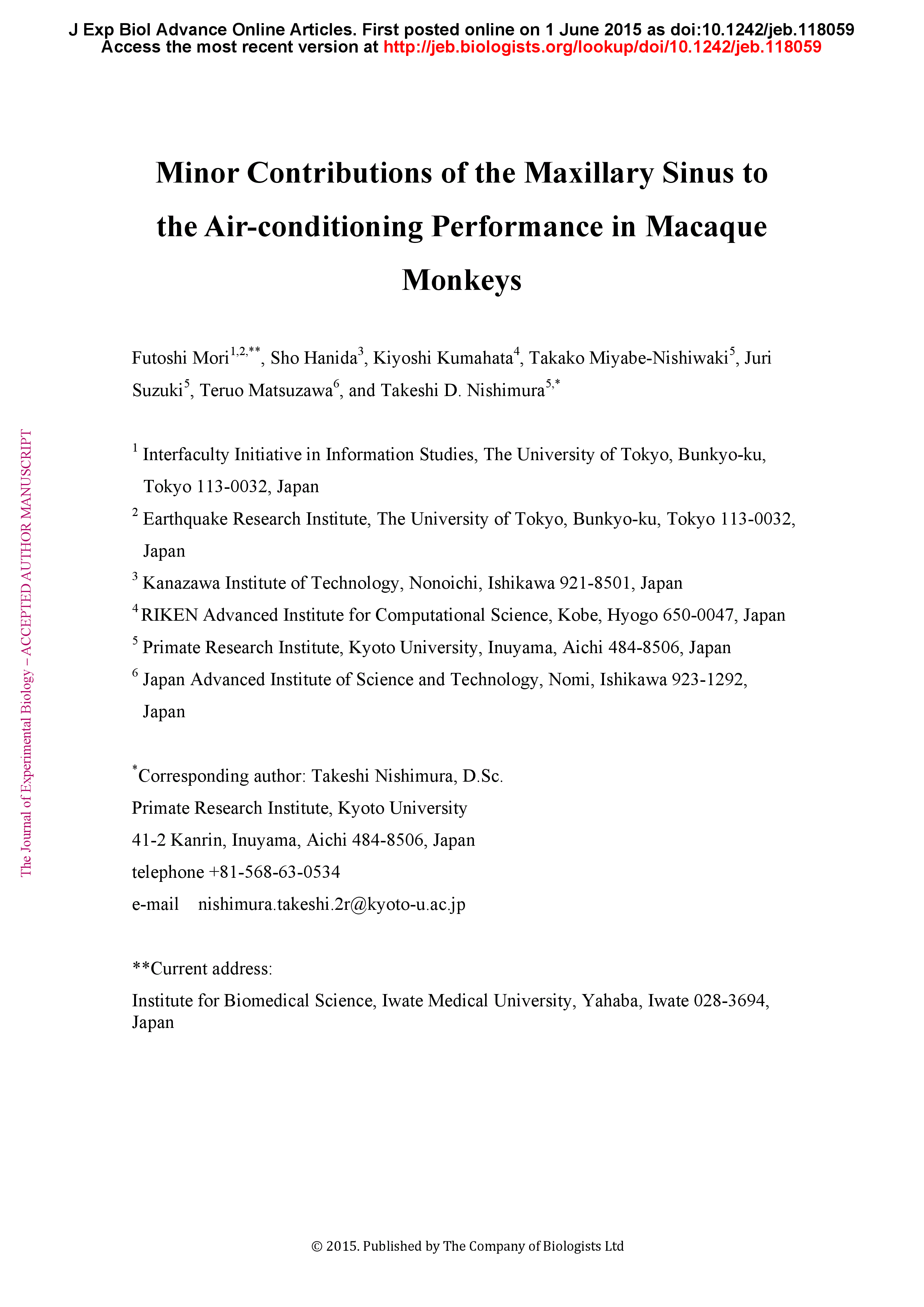The nasal passages mainly adjust the temperature and humidity of inhaled air to reach the alveolar condition required in the lungs. By contrast to most other nonhuman primates, macaque monkeys are distributed widely among tropical, temperate and subarctic regions, and thus some species need to condition the inhaled air in cool and dry ambient atmospheric areas. The internal nasal anatomy is believed to have undergone adaptive modifications to improve the air-conditioning performance. Furthermore, the maxillary sinus (MS), an accessory hollow communicating with the nasal cavity, is found in macaques, whereas it is absent in most other extant Old World monkeys, including savanna monkeys. In this study, we used computational fluid dynamics simulations to simulate the airflow and heat and water exchanges over the mucosal surface in the nasal passage. Using the topology models of the nasal cavity with and without the MS, we demonstrated that the MS makes little contribution to the airflow pattern and the air-conditioning performance within the nasal cavity in macaques. Instead, the inhaled air is conditioned well in the anterior portion of the nasal cavity before reaching the MS in both macaques and savanna monkeys. These findings suggest that the evolutionary modifications and coetaneous variations in the nasal anatomy are rather independent of transitions and variations in the climate and atmospheric environment found in the habitats of macaques.
Minor contributions of the maxillary sinus to the air-conditioning performance in macaque monkeys
Current address: Institute for Biomedical Science, Iwate Medical University, Yahaba, Iwate 028-3694, Japan
Currently Viewing Accepted Manuscript - Newer Version Available
Futoshi Mori, Sho Hanida, Kiyoshi Kumahata, Takako Miyabe-Nishiwaki, Juri Suzuki, Teruo Matsuzawa, Takeshi D. Nishimura; Minor contributions of the maxillary sinus to the air-conditioning performance in macaque monkeys. J Exp Biol 2015; jeb.118059. doi: https://doi.org/10.1242/jeb.118059
Download citation file:
Advertisement
2023 JEB Outstanding Paper Prize shortlist and winner

The JEB Editors are delighted to announce the shortlisted authors for the 2023 JEB Outstanding Paper Prize. Read the winning paper - Tiny spies: mosquito antennae are sensitive sensors for eavesdropping on frog calls - by Hoover Pantoja-Sanchez and Brian Leavell from Ximena Bernal's lab at Purdue University, USA.
JEB Science Communication Workshop for ECRs

If you’re an early-career researcher interested in science communication and are attending the SEB Annual Conference in Prague this summer, come a day early and join the JEB Editors at a sci comm workshop to learn the key writing skills needed to promote your research to a broad audience beyond your peers (1 July at 14.30-17.30). Places are limited to 24 attendees, and applicants should apply through the SEB registration page by 30 April 2024.
Bridging the gap between controlled conditions and natural habitats in understanding behaviour

Novel technologies enable behavioural experiments with non-model species, in naturalistic habitats and with underexplored behaviours. In their Commentary, Scholz and colleagues discuss how to obtain a deeper understanding of the natural ecology and lifestyle of study animals.
How a macrourid fish remains buoyant at depths it should be unable to reach

Fish with swimbladders should not be capable of descending below 7200m, but when Alan Jamieson and Todd Bond spotted a macrourid fish at 7259m, they knew they had seen something miraculous. Working with Imantes Priede, they reveal that the swimbladder of a 1 kg fish could hold 37.9 g of oxygen, sufficient to offset the weight of the fish's bones, and take 221-440 days to fill, which is plausible because it takes years for the fish to descend to such depths.
ECR Workshop on Positive Peer Review

Are you an ECR looking for tips on how to write concise, astute and useful manuscript reviews? If so, join the JEB Editors at a 2-hour JEB-sponsored Workshop on Positive Peer Review at the Canadian Society of Zoologists annual meeting in Moncton on 9 May 2024 at 13.00-15.00. There are 25 spaces for ECRs and selection is first come, first serve. To sign up, check the ECR Workshop box when you register for the CSZ meeting.



